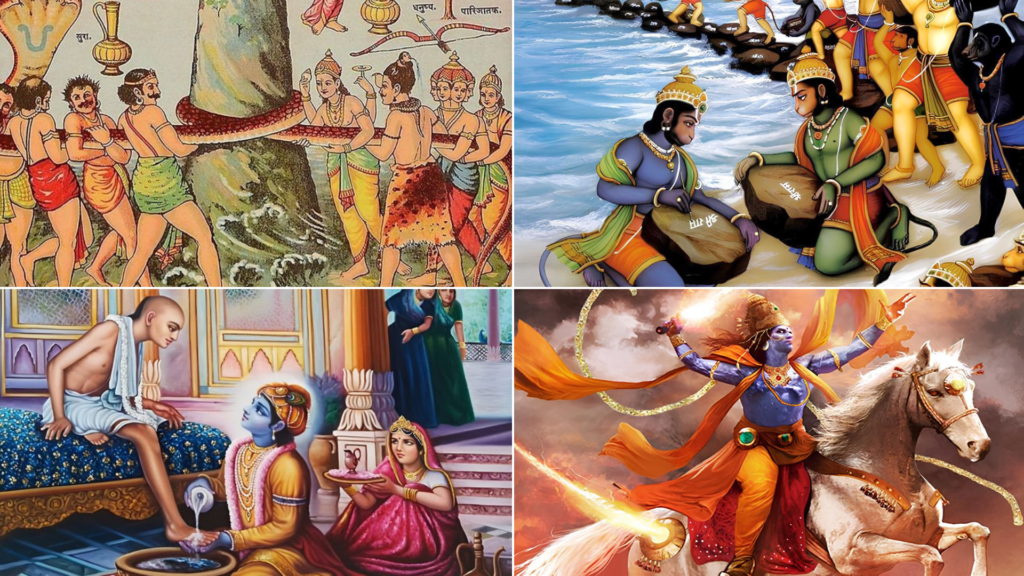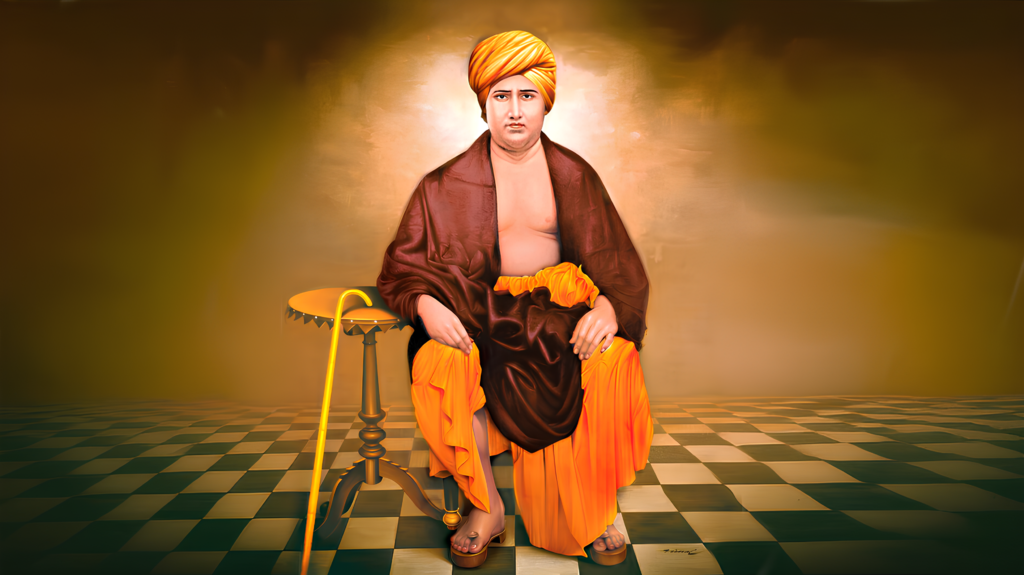The Mysteries of the Four Yugas: Is Kali Yuga Over? (Part 2)

- The Mysteries of the Four Yugas: Is Kali Yuga Over? (Part 2)
- Introduction: The Confusion About Yuga Durations
- Different Interpretations of Yugas in Scriptures
- Philosophical and Physiological Aspects of Yugas
- When Did Kali Yuga Begin?
- The Two Major Dates of Kali Yuga's Beginning
- Scientific and Astronomical Analysis of Yuga Timelines
- Conclusion: Have We Moved Beyond Kali Yuga?
Namaste Shikshanarthi’s
Have you ever wondered if Kali Yuga, the age of darkness and chaos is still ongoing, or has it already ended? Ancient Indian scriptures describe the Yugas in different ways, sometimes with vast timelines and at other times with shorter durations. This has left us with a fascinating yet confusing question: how long does each Yuga really last? In this second part of our series, we dive deeper into the mystery of Kali Yuga, explore different perspectives, and analyze whether we are still in it or have moved to another era.
Introduction: The Confusion About Yuga Durations
Once upon a time, the great sages of India looked at the universe and saw time flowing in cycles, known as Yugas. They believed that the world goes through phases of purity, strength, decline, and finally, chaos, before starting all over again. These four Yugas Sat, Treta, Dvapara, and Kali follow a pattern much like the changing seasons.
But the real question that has puzzled scholars and seekers for centuries is: how long does each Yuga last?
Some scriptures suggest that the Yugas last for millions of years, while others say their duration is much shorter, spanning thousands of years. This leads us to an even bigger question, has Kaliyug, the present age, already ended, or are we still living in it?
To find the answers, we need to dig deeper into ancient texts, scientific research, and various philosophical interpretations. Let’s embark on this journey together.
Different Interpretations of Yugas in Scriptures
Our ancient scriptures, such as the Vedas, Puranas, and Mahabharata, describe Yugas in different ways. In some verses of the Rigveda and Atharvaveda, a Yuga is said to last:
- A single year,
- Five years,
- Twelve years,
- Or even the span of a generation.
However, when we look at the Puranas, a new concept is introduced—“divine years.” This concept multiplies human years by 360 to extend the timeline significantly. According to this idea, the Yuga cycle looks like this:
- Satya Yuga: 1,728,000 years
- Treta Yuga: 1,296,000 years
- Dvapara Yuga: 864,000 years
- Kali Yuga: 432,000 years
But wait! There’s another perspective. Some ancient texts, including the Atharvaveda, mention a Yuga duration of just 12,000 years, without referring to divine years. This contradiction has led to confusion—should we accept the longer cosmic timeline or the shorter, more relatable one?
Philosophical and Physiological Aspects of Yugas
Interestingly, ancient Indian texts don’t only describe Yugas as periods of time but also as states of being.
Philosophical Perspective
The Aitareya Brahmana suggests that Yugas can be compared to different states of human consciousness:
1. Kaliyug – When a person is sleeping, representing ignorance.
2. Dvaparyug – When they wake up, representing awareness.
3. Tretayug – When they stand up, representing action and stability.
4. Satyug – When they start walking, representing ultimate wisdom.
This means that Yugas are not just time cycles, but also stages of personal and societal development.
Physiological Perspective
Similarly, the Charaka Samhita, a classical Ayurveda text, relates Yugas to different stages of human life:
1. Satyug – Childhood (innocence and purity)
2. Tretayug – Youth (energy and enthusiasm)
3. Dvaparyug – Adulthood (maturity but with conflicts)
4. Kaliyug – Old age (decline and disease)
According to this perspective, if you are healthy and mentally strong, you are not in Kali Yuga, no matter what the calendar says!
When Did Kali Yuga Begin?
To determine whether Kali Yuga has ended, we first need to figure out when it started. There are two major theories that propose different start dates:
1. 18 February 3102 BCE, based on ancient astronomical texts like the Surya Siddhanta and Aryabhata’s work.
2. 2 November 5561 BCE, suggested by modern researcher Nilesh Nilkanth Oak, based on his study of the Mahabharata’s astronomical data.
Let’s explore both in detail.
The Two Major Dates of Kali Yuga’s Beginning
1. The 3102 BCE Theory
Many people believe that Kali Yuga began on 18 February 3102 BCE. This date is based on the Surya Siddhanta, which states that at the end of the previous Yuga, all planets aligned in Aries (Mesha Rashi).
But there’s a catch:
- The Surya Siddhanta doesn’t directly mention this date.
- Aryabhata’s calculations rely on the assumption that the planetary positions at that time marked the start of Kali Yuga.
Modern scientists have run simulations of the planetary alignments for that period and found that while the planets were close, they weren’t perfectly aligned. This raises questions about the accuracy of the date.
2. The 5561 BCE Theory
In contrast, Nilesh Oak, using modern astronomical software, suggests that Kali Yuga began on 2 November 5561 BCE. He analyzed planetary data mentioned in the Mahabharata and found that key celestial alignments matched this timeline.
His argument is that the Mahabharata describes the transition between Yugas in great detail, with references to planetary movements and omens indicating the shift from Dvapara to Kali Yuga.
Scientific and Astronomical Analysis of Yuga Timelines
One of the most intriguing aspects of Yuga calculation is the role of astronomy. According to ancient texts, planetary alignments marked Yuga transitions. However, modern simulations reveal that such alignments are extremely rare.
For instance, calculations show that a perfect alignment of all planets happens roughly once in 396 billion years, making it nearly impossible for such an event to have occurred during the proposed Yuga transition dates.
This raises a fascinating question: were these alignments symbolic rather than literal? Were they meant to represent significant societal and spiritual changes rather than astronomical events?
Conclusion: Have We Moved Beyond Kali Yuga?
As we reach the end of this discussion, the mystery of Kali Yuga’s duration remains unsolved. If we follow the long cosmic timeline, Kali Yuga will last for another 426,000 years. But if we consider the shorter calculations, it might have ended already.
The conflicting theories remind us that Yugas are not just about measuring time but understanding the flow of life, society, and spiritual evolution.
Stay tuned for Part 3, where we will explore solutions to this timeless mystery and analyze how Yugas shape our understanding of history and the future.
—
If you found this exploration fascinating, share it with your friends and family and subscribe for more insightful content on Hindu philosophy and ancient wisdom!


